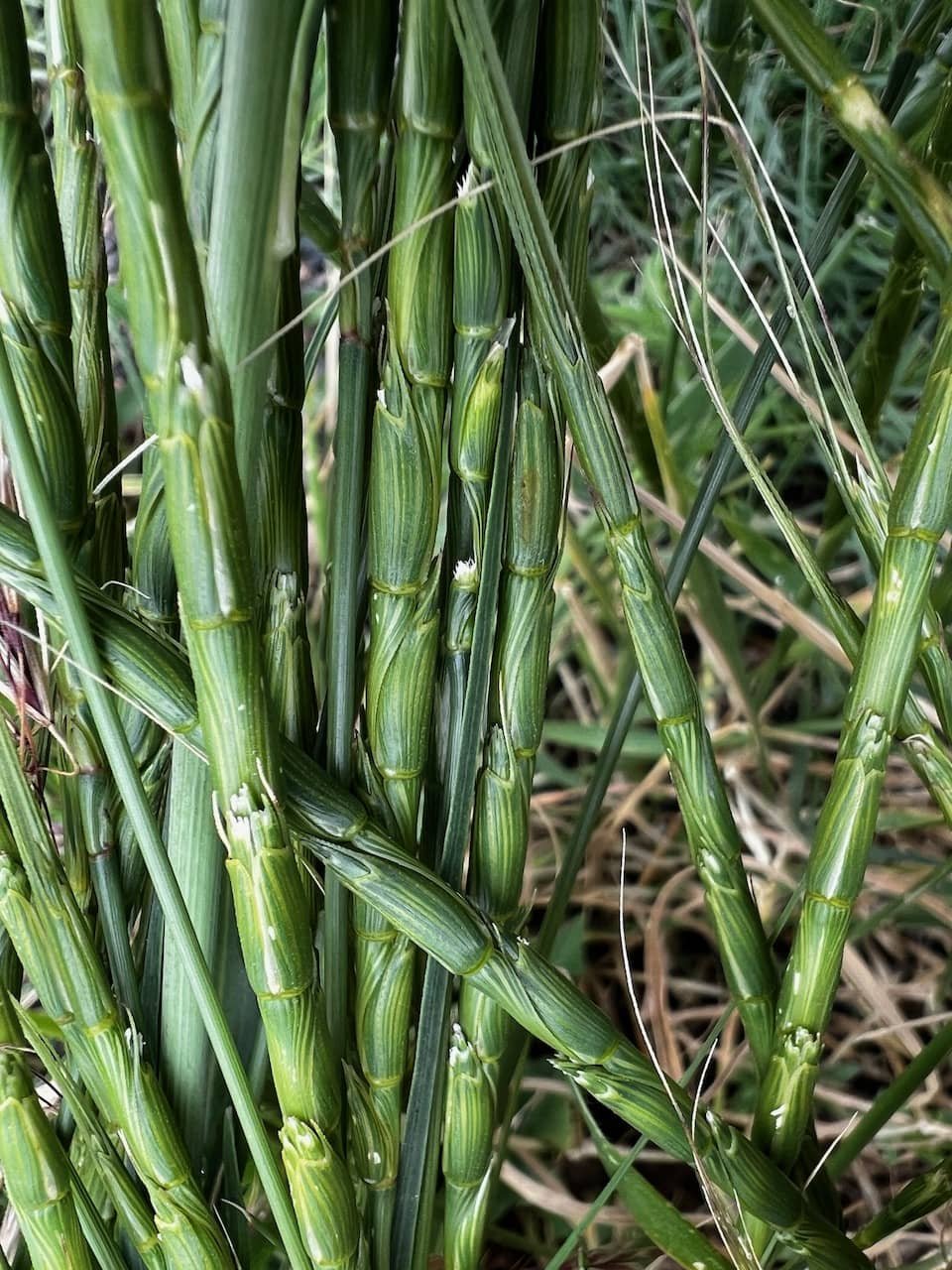★ Aegilops cylindrica (Jointed Goatgrass)
Photo taken June 4, 2025 in a very high rain period.
Photo taken June 4, 2025 in a very high rain period.
Scientific Name(s): Aegilops cylindrica
Plant Family: Poaceae
Common Names: Jointed Goatgrass, Cylindrical Goatgrass
Origin & History: Western Asia and Eastern Europe.
Germination: Annual
Growth habit: Jointed goatgrass is a winter annual weed species that has a similar growth habit and competitive ability to wheat. Germination takes place in the fall; seedlings overwinter and resume rapid growth in the spring. Plants reach reproductive stages in late summer. Requires cool temperatures for germination, typically emerging in late summer to fall. Dormancy can last 1-3 years, with seeds often persisting in the soil seed bank. (Source: CSU)
Pollination: Primarily self-pollinated but capable of limited cross-pollination. Hybridization with wheat is possible, leading to genetic contamination. (Source: CSU)
Origin & History: Introduced. ”The species was introduced into North America as a contaminant in winter wheat seed. Introduced into the United States in the late 1800’s, it is speculated that it was transported into Kansas from the eastern Mediterranean. Mennonite settlers from Russia may have brought the weed in Turkey winter wheat. Jointed goat grass is now found in most of the continental United States but is condensed around the wheat-growing regions.” (Source: invasive.org).
ID Notes:
NPM notes: low lemmas, shorter awns, higher lemmas with long awns, can cause problems for ranchers by hybridizing with winter wheat.
ID notes: pretty distinctive, but will articulate as shown in the first photo above when bent.
JeffCo Colorado Plant Database Profile:
Common Name: JOINTED GOATGRASS
Scientific Name: Aegilops cylindrica
Derivation: cylindricum - cylindrical
Synonyms: Cylindropyrum cylindricum
Family: Poaceae - Grass
Family Detail: alternate family name - Gramineae; non-woody plants with parallel leaves; roots fibrous (all portions of the root system being well branched an of equal thickness); stems round, often hollow; leaves alternate (one leaf per node - joint of the stem where the leaves join stem), simple (not divided into many similar parts); flowers in tiny spikes (unstalked flowers along a main axis), flowers usually with 2 feathery stigmas (pollen-receiving part of the female organ) and 3 stamens (male or pollen-bearing organ).
Leaf Type: simple (not divided into similar parts)
Leaf/leaflet Shape: linear (flat and narrow with parallel margins).
Fruit Type: caryopsis or grain (small, dry, indehiscent - does not open upon maturity - fruit with a thin wall surrounding and fused to a single seed).
Origin: “alien”
Control: Because annuals only spread from seed, the key to controlling annual weeds is to keep them from going to seed. Hoe or hand pull seedlings, mow or weed whack before flowering, or use an herbicide that is specific for that weed. Herbicides are most effective on annual weeds when they are young, not long after germinating. Seeds remaining in the soil in the seed bank will continue to germinate for several years, so long-term persistence is necessary. After the seed bank is exhausted, revegetate the area with desirable vegetation to prevent new infestations. An ongoing need for herbicides year after year may indicate a problem with the landscape that should be addressed before continuing to rely on chemical controls.

